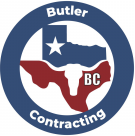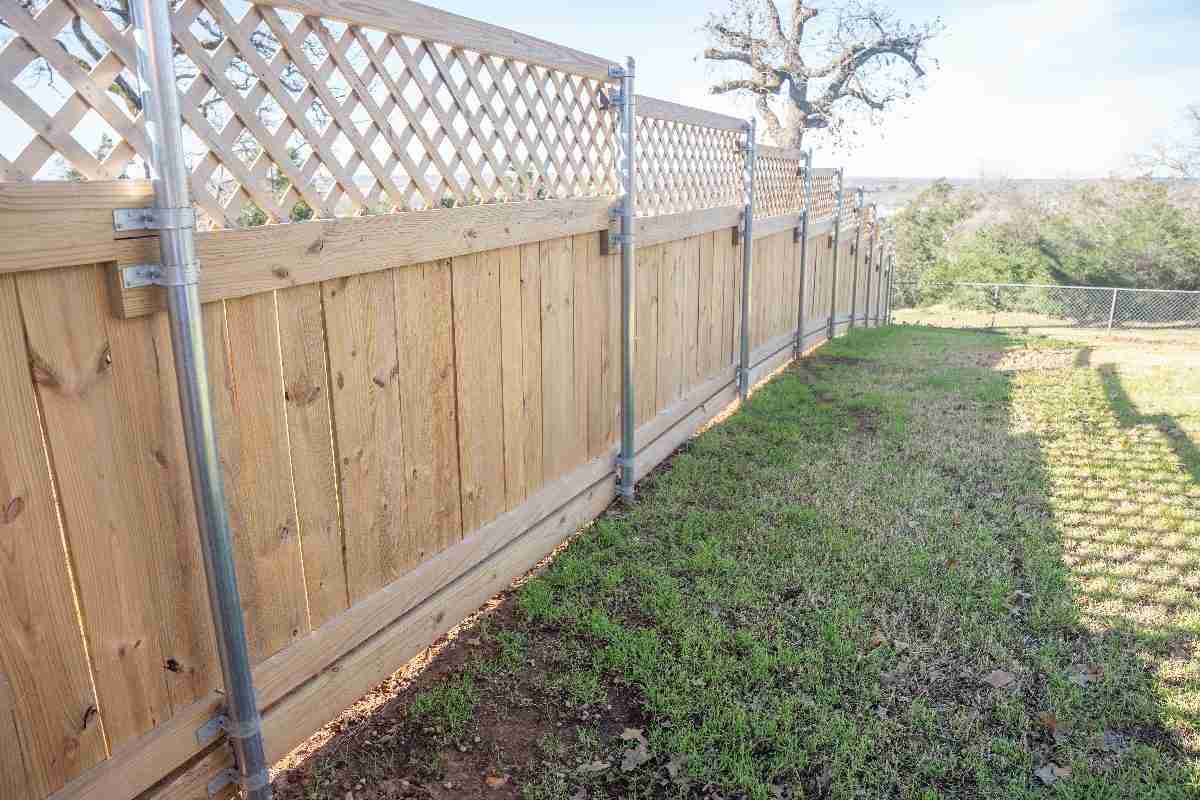Having wooden fence pickets go all the way to the ground may be more aesthetically pleasing in some cases, but it will cause a headache over time that will lead to the replacement of several pickets if not the entire fence. There should be a 2-inch gap between the ground and the pickets on your fence.
Why Your Fence Needs a Gap at the Bottom
For similar reasons to why concrete isn’t the best option for posts, the main reason for having a gap at the bottom of your fence is to prevent rot. Four things are required for rot to thrive: oxygen, water, the proper temperature, and food. Air is given and the temperature will be right most of the day for rot to thrive. Wood is food for rot and it’s also exceptional at absorbing moisture. When wooden pickets make contact with the ground, the soil will lock in the moisture when there is no space to allow air to dry out the wood after rain. Locking in moisture creates conditions in which rot is more likely to grow.
What Can I do About the Gap at the Bottom of the Fence
There are a couple of reasons that you might want to cover up the space between the ground and the bottom of the fence. Perhaps you don’t like the way the gap looks, or maybe you would like to prevent unwanted vermin from getting into your yard or property. There are a few fixes that you can implement that should be satisfactory.
Rot Boards (a.k.a. Kick Boards)
A rot board is typically a 2×6 wood board installed horizontally along the bottom of the fence pickets and it makes contact with the ground to close the gap. This can be a solution that looks good while protecting the pickets of your fence. If rot occurs in the horizontal boards, they are much easier and less expensive to replace than it is to replace fence pickets.
Chicken Wire or Critter Fence
If your primary concern is preventing animals from getting in and out, you can install chicken wire or critter fence along the bottom of the pickets, but it certainly isn’t the best-looking option.
Rocks
Another aesthetic option is to place small-sized rocks along the bottom of the fence. These rocks may move over time and you may need to get more rocks or rake them back into a pile eventually. In addition, you are going to battle weeds and other lawn debris.
Concrete or Concrete Gravel Boards
If you have or make a concrete mold that will easily fit beneath the fence pickets, it can be a way to block animals from going to and fro looks fairly good doing it. Another option is a concrete gravel board, which is the same idea; they just come already formed so you don’t have to do any pouring and you don’t have to make a mold.
Plants, Shrubbery and Flowers
This option is a bit more controversial. If you plant anything too close to the pickets, you’ll be causing the same problem that you’re trying to prevent by having a gap at the bottom. If you get big enough plants or shrubbery that grow tall enough while keeping a safe distance from the fence, you can easily block your view of the gap. Shrubbery should be planted at least 1 foot away from the fence. If you’re planting large trees, you’ll want them to be even farther away from the fence to prevent the root systems of the trees from interfering with the posts of the fence. Planting shrubbery or trees, however, does nothing to keep out small animals.
Have the Pros Build You a Fence That Will Last!
Butler Contracting has vast experience in fence building and will be sure to get it done the right way the first time! We offer fence maintenance packages and discounts on staining to help your fence last even longer. Give us a call at (844) 628-8537 or use our Fence Estimator Tool to get started on your quote. We hope to see you on your next project!



